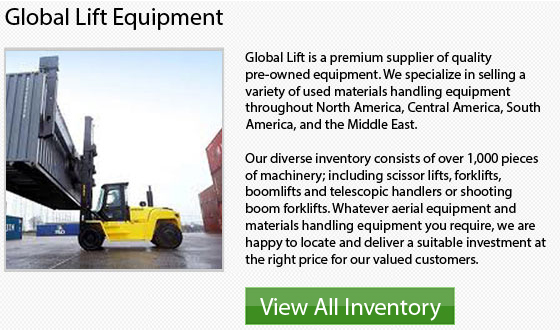
Forklifts
In material handling, construction, manufacturing and warehousing operation, forklifts are usually utilized to transport and lift palletized loads. With manual-drive forklifts, the travel or load movement is either walk-behind or powered manually. Motorized drive forklifts have a motorized drive. In various models, the forklift has a protected seat or cab for the driver. Fork trucks include features like for example cabs, and backup alarms and are additionally motorized. Various kinds of forklifts are counterbalanced in order to prevent the vehicle from turning over. Other types of forklifts come equipped with safety rails, or a rotating element like for example a hand rail or a turntable.
Other factors that are essential to consider when selecting a forklift are the lift capacity and stroke. Lift capacity is defined as the supportable, maximum load or force. Stroke is defined as the difference between fully lowered and completely raised lift positions.
Some of the other key specifications for the forklift are fuel type and tire type. The fuel choices available are: liquid propane or LP, natural gas, electricity, compressed natural gas or CNG, propane, diesel or gasoline.
There are two basic kinds of tires for forklifts and fork trucks: pneumatic and solid. The cushion or solid tires require less maintenance than pneumatic tires and do not puncture as easy. Pneumatic or air-inflated tires offer load cushioning and great drive traction. At the end of the day, cushion or solid tires provide less shock absorption.
Normally used on rough terrain are Class VII forklifts. These types of machinery are usually utilized in agriculture, construction and in logging environments. Lastly, Class VIII forklifts have all burden and personnel carriers. Dual Fuel lift trucks typically fit in this class.